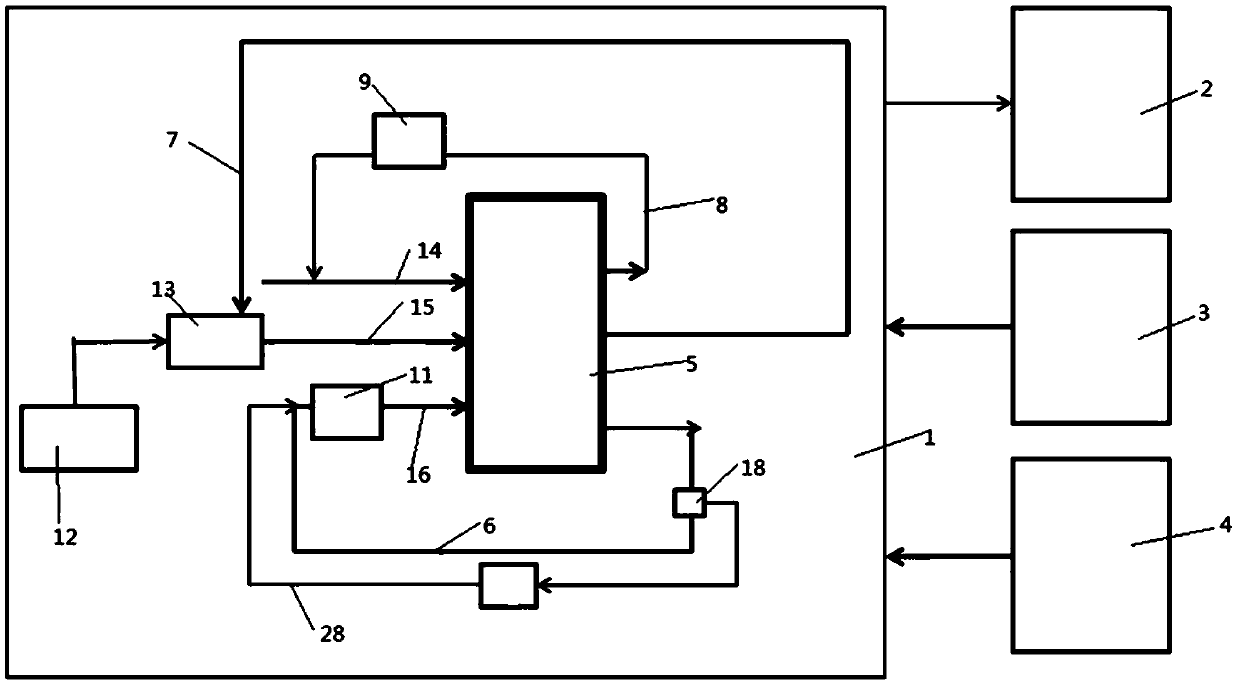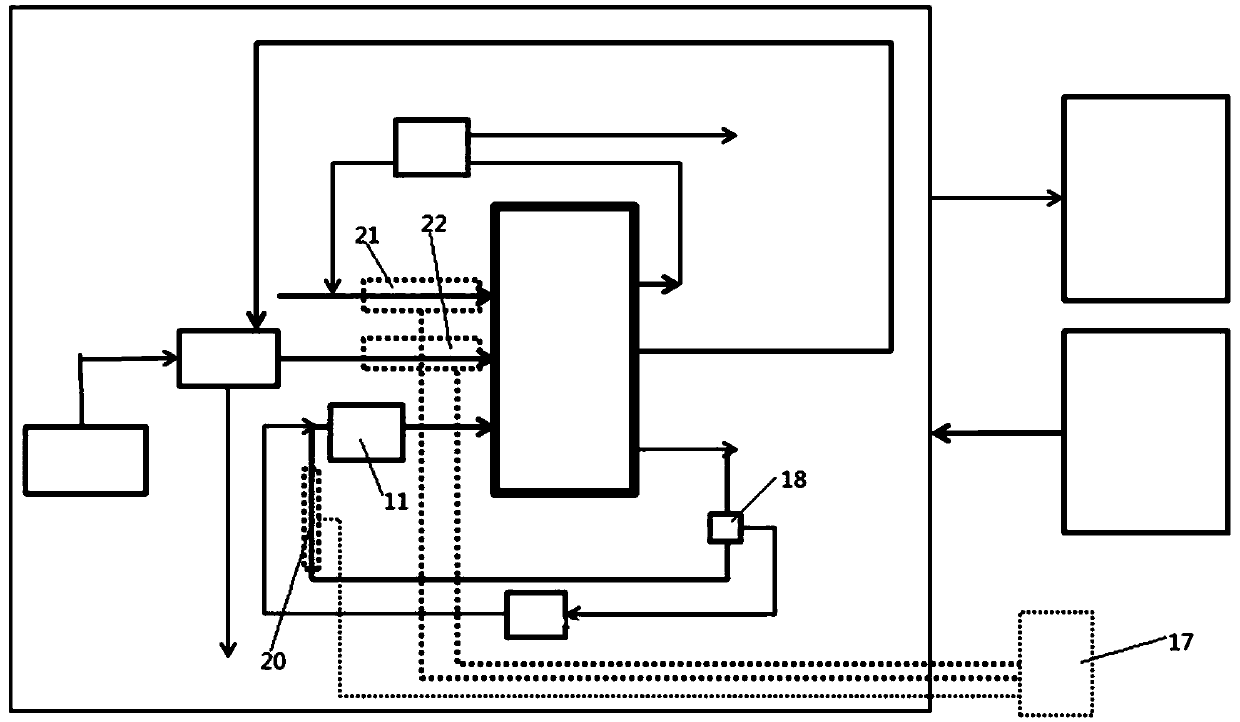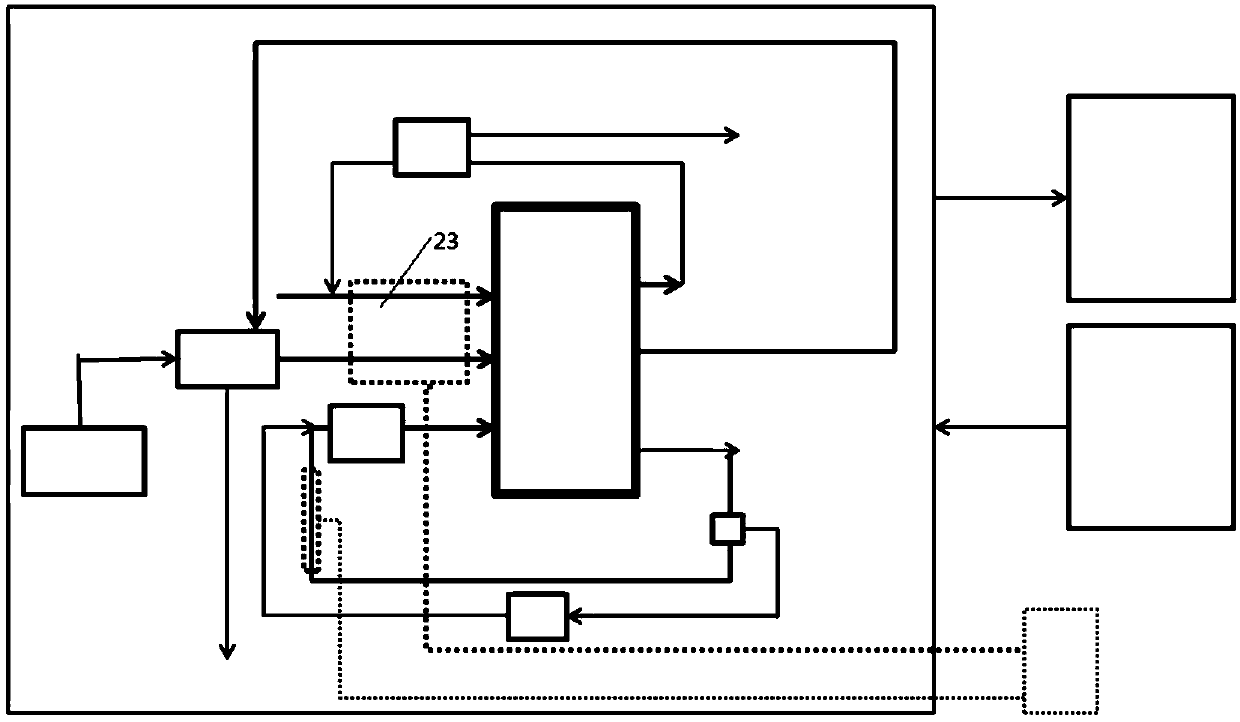A low-temperature cold-start fuel cell system and its utilization method
A fuel cell system and fuel cell technology, applied in the direction of fuel cells, fuel cell additives, fuel cell heat exchange, etc., can solve problems such as stack leakage, inability to react, and difficulty in control
- Summary
- Abstract
- Description
- Claims
- Application Information
AI Technical Summary
Problems solved by technology
Method used
Image
Examples
Embodiment 1
[0026] This embodiment is a comparative example, using the above-mentioned liquid-cooled proton exchange membrane stack fuel cell, after the last start-up, the cathode loop 7 and the anode loop 8 were purged with inert gas nitrogen to contain and a small amount of moisture. The start-up temperature is -10°C, and the normal start-up temperature is when the temperature rises to 5°C. The fuel cell adopts figure 1 connection shown. Taking electric heating as an example, 374kJ energy is required, and the stack is heated only by heating the coolant, that is, the cooling inlet pipeline 16 is heated, thereby cold starting the fuel cell. If a 600W electric heater is used, without considering energy loss and heat loss, the system needs to be heated for at least 10 minutes to reach the start-up temperature of 5°C, and then at 0.1A / cm 2 It takes about 3.5 minutes to reach 25°C when the current density is added to the load at the power end, and the fuel cell starts at -10°C, and it takes...
Embodiment 2
[0028] In this embodiment, the above-mentioned liquid-cooled stack is used, and the start-up temperature is -10°C, and the normal start-up temperature is set at 5°C, and the fuel cell adopts figure 2 connection shown. The electric heating method is used to heat the cell stack only by heating the cathode and anode gas, that is, heating the anode inlet pipeline 14 and the cathode inlet pipeline 15, thereby cold starting the fuel cell. to correspond to 0.1A / cm 2 Taking the gas flow of current density as an example, the heating power of the anode is 50W, and the heating power of the cathode is 250W. Considering the redundancy of heat dissipation and energy loss, the gas entering the system at -10 degrees is heated to 60°C, and the two heaters are uniformly controlled. When the heated air flows into the stack, at 0.1A / cm 2 Current density plus end load. At this time, the power output of the stack is about 1.5kW, and the heat output is 1.5kJ / s. The system can reach the start-up t...
Embodiment 3
[0030] In this embodiment, as a preferred example, the above-mentioned liquid-cooled stack is adopted, the start-up temperature is -10°C, and the temperature is raised to 5°C as the normal start-up temperature, and the fuel cell adopts figure 2 connection shown. Electric heating is used to heat the stack by heating the cooling liquid and the cathode and anode gases, that is, simultaneously heating the anode inlet pipeline 14, the cathode inlet pipeline 15, and the cooling inlet pipeline 16, thereby cold-starting the fuel cell. to correspond to 0.1A / cm 2 Take the gas flow rate of current density as an example, the anode heating power is 50W, the cathode heating power is 250W, and the cooling heating power is 600W. Considering the redundancy of heat dissipation and energy loss, the gas entering the system at -10 degrees is heated to 60 degrees Celsius, and the coolant is heated at the same time , three heaters are controlled separately. When the heated air flows into the stack...
PUM
 Login to View More
Login to View More Abstract
Description
Claims
Application Information
 Login to View More
Login to View More - R&D
- Intellectual Property
- Life Sciences
- Materials
- Tech Scout
- Unparalleled Data Quality
- Higher Quality Content
- 60% Fewer Hallucinations
Browse by: Latest US Patents, China's latest patents, Technical Efficacy Thesaurus, Application Domain, Technology Topic, Popular Technical Reports.
© 2025 PatSnap. All rights reserved.Legal|Privacy policy|Modern Slavery Act Transparency Statement|Sitemap|About US| Contact US: help@patsnap.com



